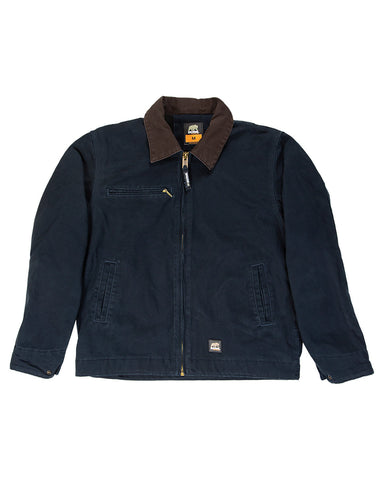Categories
Recent Articles
Featured Products
-
CAMPUS PURPLE
-
TRUE ROYAL
-
CAMPUS GOLD
-
CARBON
- + 8
How to Screen Print Your Own T-Shirt - The Ultimate Guide

Are you eager to express your creativity and design your own custom T-shirts? Screen printing is an excellent way to do just that. This comprehensive guide will walk you through the process of screen printing your own T-shirt, from the necessary materials to step-by-step instructions. Get ready to unleash your inner artist and wear your creations with pride.
How to Screen Print Your Own T-Shirt
To successfully do your custom t-shirt screen printing, you'll need to follow a series of steps. This section outlines the process in detail.
Gathering Materials for Screen Printing
Before embarking on your screen printing journey, it's essential to assemble all the necessary materials and tools. Ensuring you have everything you need will streamline the process and help you create high-quality prints. Here's an extensive list of materials you should gather:
T-shirt(s)
Choose the T-shirts you plan to print on. Consider the size, color, and material to match your design and target audience.
Screen with a Mesh of Your Choice
Select a screen with an appropriate mesh count for your design. The mesh count determines the level of detail and ink coverage.
Emulsion and Sensitizer
The emulsion is a light-sensitive coating applied to the screen to create stencils. The sensitizer is mixed with emulsion to make it photosensitive. Ensure you have enough emulsion and sensitizer for your projects.
Squeegee
A squeegee is a crucial tool for pushing ink through the screen and onto the T-shirt. Choose the right size and durometer (hardness) for your printing needs.
Ink and Ink Palette
Select screen printing ink in the colors you desire. Different types of ink are available, including water-based and plastisol. Also, prepare an ink palette for mixing and holding ink during printing.
Light Source
You'll need a light source, such as a UV exposure unit or strong sunlight, to expose your screens after applying emulsion. Ensure it's powerful enough to properly cure the emulsion.
Washout Station
A washout station is used to rinse the screen after exposure to remove unexposed emulsion and reveal your stencil. It typically includes a high-pressure water source and a drainage system.
A Design or Image
Prepare the design or image you want to print. You can create it digitally or use hand-drawn artwork. Ensure the design is compatible with screen printing and suitable for your chosen T-shirt and ink colors.
By collecting these materials, you'll be well-prepared to start your screen printing project successfully. Properly selected and maintained equipment, along with a well-prepared design, will lead to professional-looking prints that meet your expectations.
Screen Printing Process
The screen printing process is a highly effective and durable method for transferring ink onto various surfaces. It involves creating stencils on screens, which are then used to apply ink to substrates. With different types of screen printing and the ability to produce vibrant and long-lasting prints, remains a popular choice for a wide range of applications in the process of how you can screen print your own t-shirt.
Coating the Screen:

To begin the screen printing process, you must first prepare the screen. This involves coating the screen with a mixture of emulsion and sensitizer to create a light-sensitive surface that will allow you to transfer your design. Ensure that the emulsion and sensitizer mixture is applied evenly to both sides of the screen. This step is critical to achieving a high-quality print.
Drying the Screen:

After coating the screen, you should place it in a dark room to dry. The drying time can vary, taking anywhere from a few hours to overnight, depending on the specific type of emulsion used and environmental conditions. It is essential to ensure that the emulsion is fully dry before proceeding to the next steps in the screen printing process.
Design Preparation:

Design preparation is a crucial step in screen printing. To create your design, you'll need to transfer your chosen image or design onto a transparent material, which will serve as your stencil. This stencil will later be used to expose the screen, allowing the design to be transferred to it accurately.
Exposing the Screen:

With your design prepared on the transparent material, place it on top of the coated screen. Expose the screen to a strong light source, such as a specialized exposure unit. The light will harden the emulsion in the exposed areas, while the design areas will remain soft. This process effectively transfers your design onto the screen and prepares it for printing.
Positioning:

When it comes to printing, start by securing your T-shirt on a flat surface and carefully positioning the prepared screen on top of it. Ensure proper alignment to achieve precise and accurate prints.
Ink Application:

Apply ink at the top of the screen, just above the design area. Use a squeegee to pull the ink across the screen, pressing firmly to force the ink through the open areas of the stencil. This step is where the actual image is transferred from the screen to the T-shirt.
Lifting the Screen:

After applying the ink, gently lift the screen from the T-shirt, revealing your printed design. This moment is where you get to see your design come to life on the fabric.
Drying:

Allow the ink to dry on the T-shirt for at least 24 hours. Proper drying ensures that the print adheres securely to the fabric and maintains its vibrant colors and durability.
Heat Setting:

To make your screen-printed design permanent and wash-resistant, you'll need to heat-set it. This can be achieved by either ironing the T-shirt or using a heat press machine, which will apply controlled heat and pressure to the print, ensuring it lasts through many washes and wears.
Tips for Success
To ensure your screen-printing venture is a success, here are some valuable tips:
- Practice Makes Perfect: Screen printing is an art, and like any art, practice is essential. Don't be discouraged if your first attempts aren't flawless. With time and effort, your skills will improve.
- Design Choice: Select designs or images that resonate with you. The more passionate you are about your designs, the more dedication you'll put into your work.
- Quality Materials: Invest in quality screen printing materials, from screens to inks. These can make a significant difference in the final product.
- Safety First: When working with emulsion and inks, prioritize safety. Use proper ventilation, wear protective gear, and follow safety guidelines.
- Experiment: Don't be afraid to experiment with various techniques, color combinations, and substrates. This is where your creativity can truly shine.
- Market Your Creations: If you intend to sell your printed T-shirts, consider setting up an online shop or using social media to showcase your work.
- Learn from Others: Join online forums or local screen printing communities to learn from experienced screen printers. Sharing knowledge can be incredibly helpful.
Express Your Style with DIY Screen Printing
Screen printing your own T-shirts is not just a creative outlet; it's a way to make unique, personalized garments that reflect your style. Whether you're printing T-shirts for personal use, as gifts, or as a small business venture, this guide equips you with the knowledge to get started.
Now that you've acquired the fundamentals of screen printing, remember that it's a skill that you can continually refine. As you gain experience, you'll develop your unique techniques and style, setting you apart in the world of DIY fashion.
So, roll up your sleeves, get your materials ready, and let your imagination run wild as you embark on your screen printing journey. Who knows, you might just uncover a hidden talent and a new passion for creating one-of-a-kind apparel.
Start printing, start creating, and start wearing your creativity proudly!
Conclusion
Congratulations, you've now learned how to screen print your own T-shirt! With the right materials and a bit of practice, you can create custom, unique designs that reflect your style. Don't be afraid to experiment with colors, designs, and techniques to unleash your creativity.
Featured Collection
-
CAMPUS PURPLE
-
TRUE ROYAL
-
CAMPUS GOLD
-
CARBON
- + 8
-
CAMPUS PURPLE
-
TRUE ROYAL
-
CAMPUS GOLD
-
CARBON
- + 8
-
FOREST GREEN
-
BLACK
-
RED
-
ROYAL
- + 2
-
WHITE
-
PINK CANDY
-
LIGHT BLUE
-
ORANGE
- + 3
-
MIDNIGHT
-
BLACK
-
CAMPUS PURPLE
-
TRUE ROYAL
-
CAMPUS GOLD
-
CARBON
- + 8
-
CAMPUS PURPLE
-
TRUE ROYAL
-
CAMPUS GOLD
-
CARBON
- + 8
-
STEEL
-
BLACK
-
GREEN CAMO
-
BLACK CAMO
-
Dill
-
Safety Yellow
-
Red
-
Hunter
- + 6
-
Navy
-
Safety Yellow
-
Dill
-
Hunter
- + 7


































